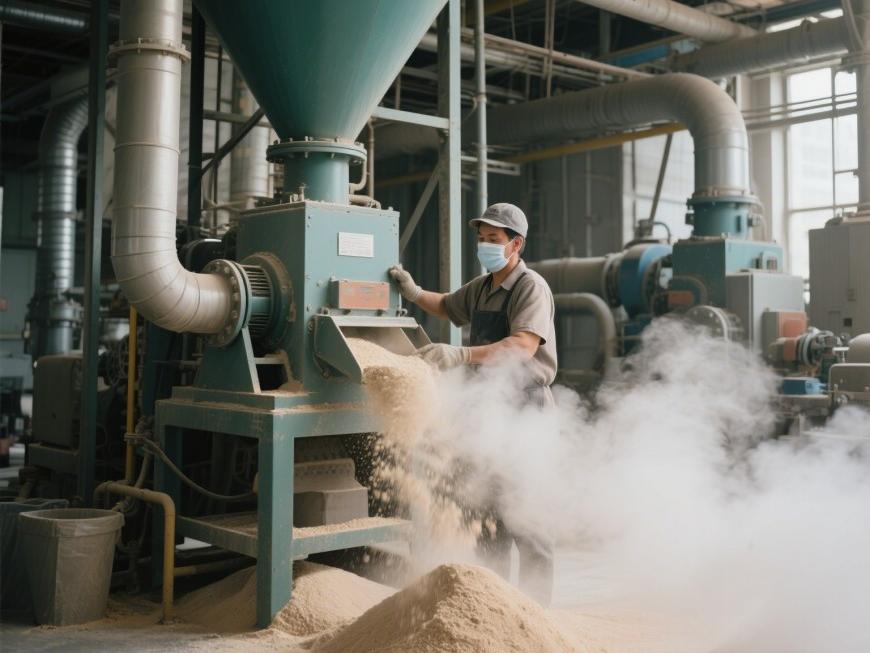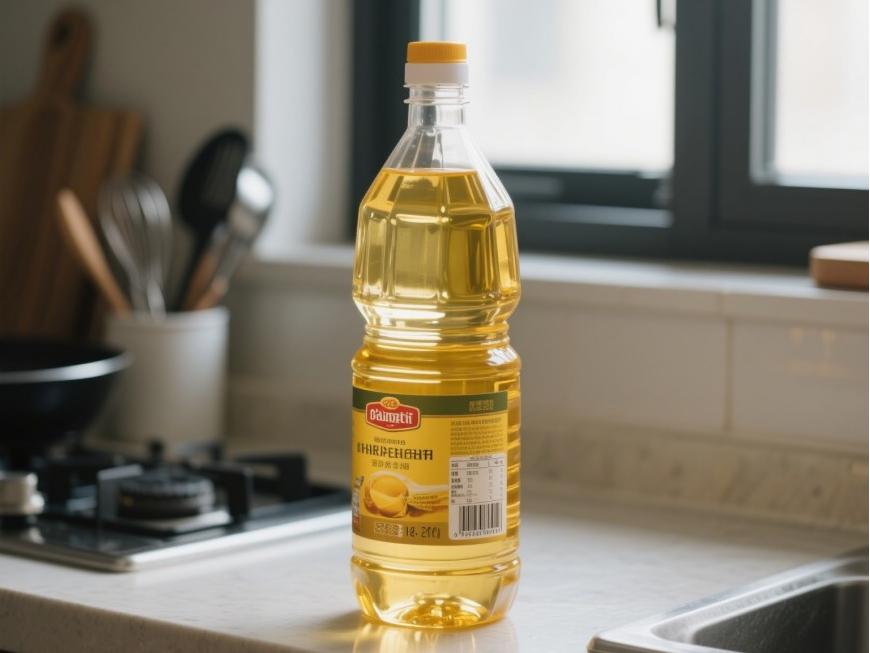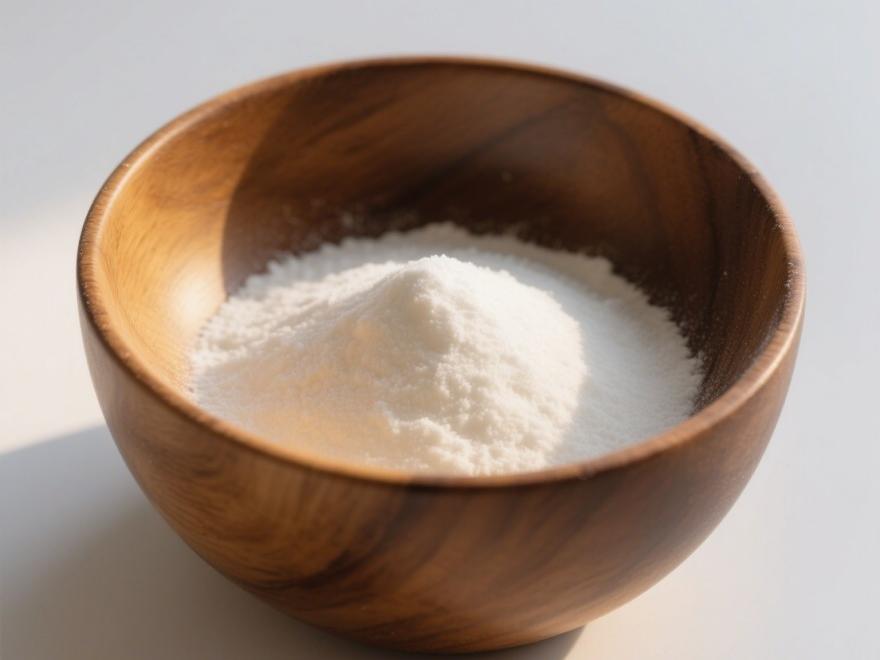What Is the Meaning of Medium Chain Triglycerides?
Fats 한d oils account for a significant proportion 의 the total energy 에서take in the human diet. 이y are widely consumed due to their role in traditional cooking methods such as frying and stir-frying, which impart distinctive flavors that are highly appreciated by consumers. For example, in many European countries, fat accounts for 40% to 50% 의 total dietary energy, approximately 30% to 40% in the United States, and even in developing regions such as Asia and Africa, it ranges from 15% to 25% [1]. However, the majority 의 nutritionists believe that excessive dietary fat intake can lead to various chronic diseases, such as coronary heart disease, diabetes, cancer, and obesity. In 1988, a report by the U.S. Department of Health and Human Services emphasized the important role of diet in protecting people's health and preventing diseases, drawing attention to dietary fats [2].
On the other hand, although most consumers are aware of the relationship between health and fat intake and understand that reducing fat intake can help prevent diseases, relying solely on reducing fat content in foods or consuming fat-free foods directly affects the flavor, texture, and quality of foods, failing to meet consumer needs. As a result, medium-chain triglycerides (MCTs), a low-calorie dietary fat with health benefits that does not affect food flavor, have garnered attention. Medium-chain triglycerides refer to a type of structural lipid whose fatty acids consist of hexa-carbon to dodeca-carbon chain fatty acids such as caprylic acid and capric acid.

1 Physical and chemical properties of medium-chain triglycerides [3, 4, 7]
1.1 Physical properties
At room temperature, medium-chain triglycerides are colorless, odorless liquids with low viscosity and a density lower than that of most plant oils. They exhibit excellent antioxidant stability and remain highly stable even under extreme temperature conditions. After prolonged exposure to high frying temperatures, their viscosity increases only slightly, unlike other plant oils, which thicken due to oxidative polymerization reactions. For example, plant oils such as soybean oil, when heated at 230°C for 24 hours, turn into a viscous brown gelatinous substance, while the viscosity of medium-chain triglycerides remains nearly the same as that of plant oils at room temperature. This significantly enhances the spreadability of medium-chain triglycerides. Even at lower temperatures of 0°C, they maintain a transparent appearance and low viscosity. A 10% solution of medium-chain triglycerides (SFI = 0% at 5°C, refractive index at 20°C = 1.4496) in a 90% aqueous solution containing water-soluble soy polysaccharides and sucrose polyesters in an O/W emulsion system maintains transparency at temperatures between 5°C and 35°C.
Medium-chain glycerides are odorless and tasteless, but their components may have unpleasant odors, such as free caprylic acid and capric acid, which often have a sheep-like odor, while monoglycerides have a bitter taste. Therefore, the food industry generally specifies that the acid value of medium-chain glycerides should be 0.1 or below, and the hydroxyl value should be 5 or below. Medium-chain triglycerides have a low molecular weight and a boiling point lower than that of most vegetable oils, around 150°C, so they are not suitable for frying, baking, or roasting.
Medium-chain triglycerides have short carbon chain lengths, and the lengths of the fatty acids they contain are relatively similar. They do not crystallize even at extremely low temperatures and exhibit excellent freeze stability. They can be used in low-temperature spray drying in the food industry without causing nozzle blockages. Their hydrophilicity is greater than that of general plant oils, and their HLB value is higher than that of plant oils, making them excellent surfactants. They also have better extensibility and lubricity than plant oils.
1.2 Chemical Properties
Medium-chain triglycerides have extremely low levels of unsaturated fatty acids and excellent oxidative stability, with an iodine value not exceeding 0.5. Compared to plant oils and animal oils, they are currently the most oxidatively stable edible oils, requiring no addition of antioxidants such as TBHQ during storage. At room temperature, its shelf life can reach 30 years, making it a suitable substitute for other edible oils as a food ingredient to prevent food spoilage caused by fat auto-oxidation. This excellent oxidative stability ensures that medium-chain triglycerides do not undergo polymerization reactions even at high temperatures. When tested for oxidative stability at 100°C using the Rancimat method, medium-chain triglycerides exhibit approximately 16 times the oxidative stability of soybean oil. Using the AOM method, the peroxide value remains virtually unchanged after 300 hours, whereas soybean oil reaches 100 meq/kg within 16 hours. It is compatible with various solvents, lipids, antioxidants such as TBHQ and butylated hydroxytoluene, and fat-soluble vitamins like vitamins A and E. Most plant oils (containing unsaturated fatty acids) tend to polymerize under the combined effects of high temperature and oxygen, significantly increasing oil viscosity and affecting demolding performance. However, under the same conditions, medium-chain triglycerides can serve as excellent demolding agents.
2 Physiological functional characteristics of medium-chain triglycerides
2.1 Different metabolic pathways of medium-chain triglycerides and long-chain triglycerides in the body [3, 8, 15]
The energy value of general fats is 37.68 kJ/kg (9.0 kcal/kg), while that of medium-chain triglycerides is 34.75 kJ/kg (8.3 kcal/kg), with little difference between the two, both belonging to high-energy foods. However, due to their different metabolic pathways in the body, medium-chain triglycerides exhibit more unique functional characteristics.
We know that fatty acids with acyl groups at the sn-1 and sn-3 positions are absorbed as free fatty acids, while those with acyl groups at the sn-2 position are absorbed as monoglycerides. In the digestive system, medium-chain triglycerides are first emulsified by bile and then broken down into glycerol and fatty acids. The fatty acids dissolve in intestinal fluid, are absorbed in the intestines, and bind to serum proteins. They enter the liver via the portal vein without requiring carnitine and directly enter the mitochondria. Medium-chain triglycerides rarely accumulate in adipose tissue. Under the influence of high metabolic breakdown, they reduce protein catabolism, enhance thyroid function, and do not form esters with cholesterol. Due to this unique metabolic pathway, medium-chain triglycerides are widely used in dietary therapy for obese patients with restricted diets.
Long-chain triglycerides are also emulsified by bile and broken down by pancreatic lipase into fatty acid glycerides and monoglycerides. The fatty acids attached to sn-2 differ from those attached to sn-1 and sn-3. Fatty acids at the sn-2 position are efficiently absorbed as monoglycerides, while those at the sn-1 and sn-3 positions are re-esterified into triglycerides in intestinal epithelial cells, bind to lipoproteins, and are transported to the liver via the lymphatic system and systemic circulation in the form of chylomicrons. They are then stored in adipose tissue. To enter mitochondria for energy conversion, they must first bind with carnitine to undergo complete oxidation into water, CO₂, and energy.

2.2 Drug Resistance [5–6]
The U.S. Food and Drug Administration (FDA) has found that medium-chain triglycerides are generally harmless to the human mouth and gastrointestinal tract, confirming their good drug resistance in human nutrition. The recommended dietary range for medium-chain triglycerides for healthy adults is 30–100 g, accounting for 40% of daily energy requirements. However, experiments involving healthy volunteers and patients with excessive intake of medium-chain triglycerides in their diets have shown that the following symptoms generally occur: vomiting, abdominal distension, gastrointestinal discomfort, abdominal cramps, and osmotic diarrhea.
The amount of medium-chain triglycerides consumed determines the concentration of medium-chain fatty acids in the bloodstream in their non-esterified form. If a healthy individual consumes a diet containing 50g of medium-chain triglycerides equivalent to 4186.8 kJ of energy, the concentration of C6:0–C12:0 in the blood plasma reaches 200–500 μmol/L. After reaching this peak value post-meal, the non-esterified fatty acids rapidly return to their original levels. Furthermore, experimental studies have shown that the presence of medium-chain fatty acids in the blood is often considered a cause of harmful effects, such as liver dysfunction and damage associated with metabolic and lipid metabolism disorders, where medium-chain triglycerides and shorter-chain fatty acids are detected. Research also indicates that excessive intake of medium-chain triglycerides leads to the accumulation of unbound caprylic acid in the blood, which can enter the brain and cause neurological weakness. Medium-chain fatty acids have a weak affinity for proteins; when this affinity is too low, medium-chain fatty acids can diffuse through the blood-brain barrier into the cerebrospinal fluid, thereby causing neurological weakness.
2.3 Different oxidation pathways of medium-chain triglycerides and long-chain triglycerides [3, 5]
After being broken down into medium-chain and long-chain fatty acids, medium-chain fatty acids must first undergo ω-oxidation to form δ,ω-carboxylic acids, which are then β-oxidized to provide directly usable energy in the form of medium-chain fatty acids. In contrast, long-chain fatty acids undergo β-oxidation directly, first activating the fatty acids to form acyl-CoA, which is then converted by acyl-CoA dehydrogenase, hydratase, β-hydroxy acyl-CoA dehydrogenase, and coenzyme NAD, they are converted into β-keto acyl-CoA. This is then broken down by coenzyme A to form acetyl-CoA and acyl-CoA with two fewer carbon atoms, releasing energy in the form of ATP. Medium-chain fatty acids reduce ammonia excretion, indicating that protein breakdown decreases, leading to an increase in blood glucose concentration and a rise in free fatty acid concentration in plasma. This may be due to medium-chain fatty acids reducing glucose oxidation and also decreasing glycogen utilization. Additionally, the oxidation of medium-chain fatty acids produces a large amount of ketone bodies, which can serve as an energy source for tissues dependent on glucose, thereby reducing glucose consumption.
The following are the differences in the transport, distribution, and metabolic pathways of triglycerides based on carbon chain length.
3 Application Prospects of Medium-Chain Triglycerides
3.1 Applications of Medium-Chain Triglycerides in the Feed Industry [12–14]
Medium-chain triglycerides have a unique role in enhancing the growth and survival rate of newborn mammals. When feeding medium-chain fatty acids to suckling piglets, in addition to considering the dose's effect on digestion, it is also important to consider whether it affects the intake of colostrum. Benevenga reported that a single administration of 12 ml did not reduce colostrum intake. In the diet of weaned piglets, an 8% medium-chain fatty acid mixture can be added, but it is best used in newborn piglets and administered orally within 12 hours of birth. In practical feeding, coconut oil can be used as a substitute for medium-chain triglycerides, coconut oil contains 80% medium-chain fatty acids. When used at 8% in the diet of piglets before and after weaning, coconut oil has a fat digestibility rate of 91%–94%, and protein deposition, weight gain, and feed intake and feed efficiency are all better than those of corn oil and beef tallow.
Additionally, feeding sows with medium-chain triglycerides significantly improves the survival rate of newborn piglets. A diet formulated with soybean (grain SO): coconut oil (CO) (or medium-chain triglycerides) in a ratio of 9:1 maximizes piglet survival rate, with an increase of 1,100 g in body weight within the first 3 days after birth. Within the first 3 days, the survival rates for medium-chain triglycerides, CO, and SO were 98.6%, 80.0%, and 47.6%, respectively. Additionally, medium-chain triglycerides have widespread applications in the feed of broiler chickens and chicks.

3.2 Applications of Medium-Chain Triglycerides in the Pharmaceutical Industry [3, 9, 15, 18]
Due to their unique physiological functions and metabolic pathways, medium-chain triglycerides have found extensive application in the pharmaceutical industry. Clinical studies have shown that medium-chain triglycerides have therapeutic or adjunctive therapeutic effects in conditions such as sepsis, post-surgical wound healing, abnormal fat absorption in infants and patients with biliary fibrosis, chylous effusion, Type I hyperlipidemia, and post-small bowel resection-induced malabsorption of fats. They also prevent blood clot formation, improve nitrogen balance, and, when used as cholesterol solvents containing caprylic acid and capric acid, can be employed to treat cholesterol stones.
If medium-chain triglycerides and long-chain triglycerides are simply physically mixed, they can only perform their own functions. However, if medium-chain triglycerides/long-chain triglycerides are hydrolyzed and re-esterified together under high temperature and the action of a catalyst, randomly binding different medium-chain fatty acids and long-chain fatty acids to the three carbon chains of the same glycerol molecule to form structural triglycerides, this fat emulsion is considered to have lower toxicity, more effective nitrogen-saving effects, and no impact on the body's reticuloendothelial system function compared to physically mixed medium-chain triglycerides/long-chain triglycerides.
High-fat diets are typically associated with cancer, but medium-chain triglycerides are not linked to cancer, and they do not promote tumor esterification. Recent laboratory studies on liver tumors in mice have shown that treatment with medium-chain triglycerides (caprylic acid triglycerides) can broadly kill tumor cells, while liver cells remain unaffected. This anticancer effect suggests that medium-chain triglycerides can serve as antitumor agents. For example, 32% of corn oil consumers develop colon cancer, while only 3% of coconut oil consumers do.

In addition to the above applications, medium-chain triglycerides are widely used in the food industry and cosmetics industry. For example, coconut oil can be sprayed on products like crispy cookies to enhance gloss, block moisture, and extend shelf life. In cosmetics, caprylic and capric acid glycerides can be absorbed by the skin, oxidize and metabolize rapidly, have minimal storage tendency, and exhibit emulsifying stability and antioxidant properties, thereby improving the texture of cosmetics, enhancing quality, and extending shelf life. Medium-chain triglycerides can also be used by athletes for rapid energy replenishment without causing obesity.
4 Preparation of medium-chain triglycerides [3, 10, 11, 16, 17]
Medium-chain triglycerides are primarily produced from plant oils such as coconut oil, palm kernel oil, and camphor oil through hydrolysis, followed by fractionation to collect the head fractions, yielding medium-chain fatty acids such as caprylic acid and capric acid. These are then esterified with glycerol to form triglycerides. However, only 1% of caprylic acid can react with glycerol, so an excess of fatty acids must be added to the reaction system to reduce the content of glycerol monester, which has an extremely bitter taste. The product is then refined to achieve an ester content greater than 99%. Alternatively, C7–C9 fatty acids obtained from the oxidation and decomposition of paraffin wax can be used as raw materials. Benzene is employed as a water-carrying agent, and esterification is carried out for over 58 hours, followed by neutralization, deodorization, and decolorization to produce pale yellow medium-chain glycerides. Research has shown that plants containing medium-chain fatty acids include Cuphea (Cuphea viscosa Jacq), among which Cuphea viscosa Jacq, an oilseed crop, primarily contains 16.4%–20.4% caprylic acid, 66.6%–71.3% capric acid, and approximately 3.4% lauric acid, with an oil content of 27.3%–33.4%.

In industry, medium-chain fatty acid methyl esters are obtained from unsaturated oils with C18 carbon chains. This can be achieved by using oleic acid methyl ester and linoleic acid methyl ester in a copolymerization reaction with n-hexenoic acid, using a Mo-Re binary metal catalyst. The conversion rate of oleic acid methyl ester to C11–C13 unsaturated fatty acid methyl esters is 81%, and that of linoleic acid methyl ester is 90%, which can be used as surfactants in industrial applications.
Caprylic acid and capric acid in medium-chain fatty acids primarily originate from tropical trees and petroleum; however, due to their limited availability, genetic engineering can be employed to enhance production. After introducing the 12Vo-Acp lipase gene into Arabidopsis, medium-chain triglycerides accumulated in Arabidopsis seeds became the primary component of fatty acids. When this gene is introduced into rapeseed through self-pollination, the content of medium-chain triglycerides in transgenic rapeseed seeds can reach 60% of the total fatty acid content, and the plants can grow and reproduce normally. The lipoyl-Acp sulfatase gene (chFatB2) introduced into rapeseed can also produce transgenic rapeseed that accumulates caprylic acid and caproic acid.
참조
[1] Ziegler EE, Filer LJ. Wen Zhi Mei, Chen Junshi (eds.). Modern Nutrition (7th ed.) [M]. Beijing: People's Medical Publishing House, 1998, 45–46.
[2] U.S. Department of Health and Human Services, U.S. Government Printing Office, 1988.
[3] Zheng Jianxian. Functional Foods [M]. Beijing: Light Industry Press, 1998, pp. 173–176.
[4] Ying Hao. Medium-chain triglycerides—the new millennium healthy fat [J]. Grain and Oil, 2000, (4): pp. 43–44.
[5]Andre c.Bach.et al.The Usefulness of Dietary Medium chain Triglyceriders in Body Weight control :Fact and Fancy[J].Journal of Lipids Research.1996,37: 708 - 721.
[6]Hans Kaunitz.et al.Nutritional properties of Medium chain Triglycerides[J].J.Am.oil.chem.Soc.1968,45: 19 - 22.
[7] V.K.Babayan.Medium chain Triglycerides-Their composition , preparation and Application[J].J.Am.oil.chem.Soc.1968,45: 23 - 25.
[8]V.K.Babayan.Medium chain Lenghth Fatty 산 Esters and Their Medical and Nutritional Application.[J].J.Am.oil.chem.Soc.1981,58: 49 - 51.
[9]Edward A.Mascoid.et al.Lipidemic 효과 of an Inter - esterified Mixture of Butter: Medium chain Triacylgcerol and Safflower oils[J].Lipids.1999,34: 889 - 893.
[10]S.J .Knappa.et al.Fatty Aicid and oil Diversity of cuphea Visissima: A Source of Medium chain Fatty Acids[J].J.Am.oil.chem.Soc.1991,69: 515 - 517.
[11]Mohamed M.Soumanou, et al.Two Step Enzymatic Reac- tion for the Synthesics of pure Structured Triacylglcerides [J].J.Am .oil.chem.Soc.1998,75: 703 - 710.
[12]Ballevre, olivier, et al.pcT.int.Appl[J].Wo.98.54, 986.[13]Takanashi et al .Jp11[J].1999, 18: 709.
[14]Sean, Kuo - Bin et al.Anim.Feed.Sci.Technol[J].1999,76( 3 ~ 4) : 0.241 - 250.
[15] Wu Guohao, et al. Metabolic study of structural triglycerides and long-chain triglycerides in healthy volunteers [J]. Enteral and Parenteral Nutrition, 2000, (1): 4–7.
[16] Li Zong, et al. A New Bioreactor—Transgenic Plants [J]. High Technology Communications, 1998, (5): 52–57.
[17] Wang Youping, et al. Progress in Research on Fatty Acid Metabolism Engineering in Plants [J]. Chinese Journal of Oil Crop Sciences, 1998, 12(20): 89–92.
[18] Chang Zhicheng. Application of Biotechnology in the Edible Oil Industry (III) [J]. Chinese Edible Oil, 1999, (6): 50–52.


 영어
영어 프랑스
프랑스 스페인
스페인 러시아
러시아 한국
한국 일본
일본





